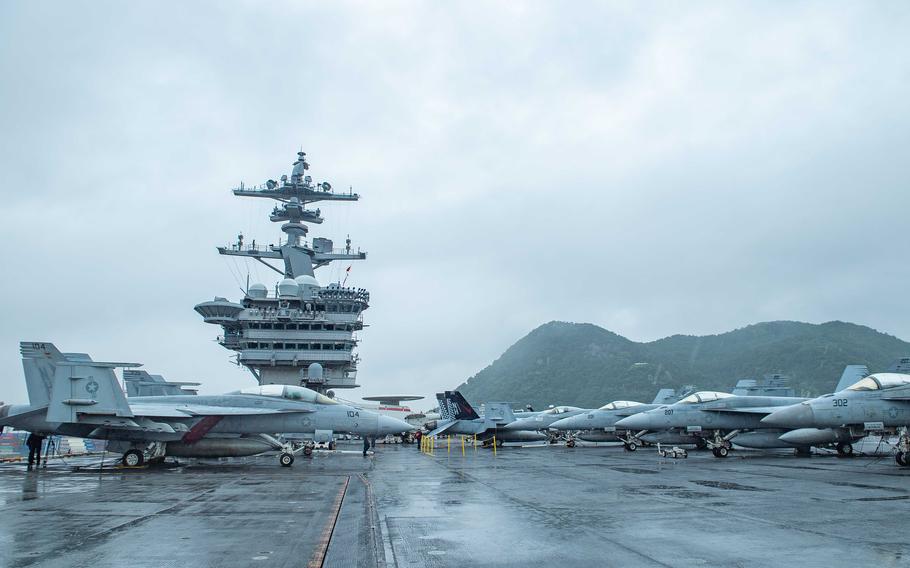
The aircraft carrier USS Theodore Roosevelt arrives in Busan, South Korea, June 22, 2024. (Aaron Haro Gonzalez/ U.S. Navy)
CAMP HUMPHREYS, South Korea — The United States, South Korea and Japan kicked off their first large-scale exercise Thursday with naval and air drills in undisclosed locations in waters near Seoul and Tokyo, according to the South’s military the same day.
Freedom Edge, the first large-scale, multidomain exercise between the three countries, began Thursday with three days of naval drills, the South’s Ministry of National Defense said in a news release.
The drills come one day after North Korea fired an intermediate-range ballistic missile from near Pyongyang toward the Sea of Japan. The country’s state-run Korean Central News Agency reported Thursday that the launch successfully tested a missile capable of carrying several independently targetable warheads.
South Korea’s military on Wednesday said the missile failed and exploded in mid-air.
Warheads from North Korea’s missile test Wednesday flew to three targets, KCNA reported. A decoy was reportedly also deployed from the missile.
The maritime portion of Freedom Edge will include the aircraft carrier USS Theodore Roosevelt, and destroyers USS Halsey and USS Daniel Inouye, the release said. The three U.S. warships arrived Saturday in Busan for a port call.
Two South Korean and two Japanese destroyers, as well as several maritime patrol aircraft from the two countries, will also participate, according to the South’s military.
The three navies will practice ballistic missile defense, anti-submarine warfare, search-and-rescue, maritime interception and cyber defense scenarios, according to the release.
Speaking aboard the Theodore Roosevelt on Tuesday, South Korean President Yoon Suk Yeol said Freedom Edge “symbolizes the U.S.’s ironclad defense commitment” to Seoul and that the inclusion of Japanese forces “will be another powerful deterrent” against North Korea, according to a news release from the South’s presidential office.
The U.S., South Korea and Japan have conducted shorter trilateral maritime and aerial drills.
The Theodore Roosevelt accompanied South Korean and Japanese destroyers for a two-day anti-submarine and maritime interception drill in waters south of Jeju Island in April; aircraft from the three countries also escorted a U.S. Air Force B-1B Lancer bomber on a bomber task force exercise in December.
Freedom Edge is expected to be on a larger scale than those previous drills. President Joe Biden, Yoon and Japanese Prime Minister Fumio Kishida agreed to conduct the multidomain exercise following a summit at Camp David, Md., in August.
Freedom Edge will reaffirm their “shared security goals” amid North Korea’s threats and violations of U.N. Security Council resolutions, the U.S. Embassy in Seoul said in a June 2 news release.
North Korea fired over a dozen ballistic missiles in seven separate days of testing so far this year.
The communist regime has also launched four satellites in the last 13 months, most recently on May 27. The U.S., South Korea and Japan allege Pyongyang’s satellite launches are conducted using prohibited ballistic missile technology.